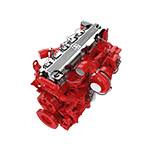Nov . 26, 2024 17:34 Back to list
Precision Lathe for Brake Drum Machining and Turning Applications
The Importance of Brake Drum Turning Lathes in Automotive Maintenance
In the realm of automotive repair and maintenance, precision and efficiency are paramount. One vital piece of equipment that plays a crucial role in ensuring the optimal performance of vehicle braking systems is the brake drum turning lathe. This sophisticated machine is essential for resurfacing brake drums, a process necessary for enhancing braking efficiency and extending the longevity of both the drums and the associated braking components.
Understanding Brake Drums
Brake drums are vital components of drum brake systems, which are commonly found in many vehicles, particularly older models and those designed for heavy-duty applications. These drums serve as the housing for the brake shoes, which press against the drum to create friction and slow down or stop the vehicle. Over time, due to wear and tear from repeated use, brake drums can become warped, pitted, or uneven, leading to diminished braking performance, increased stopping distances, and even potential safety hazards.
The Role of a Brake Drum Turning Lathe
A brake drum turning lathe is specifically designed to machine the surface of these drums, restoring their smoothness and ensuring uniformity. The process involves mounting the drum onto the lathe, where it is then rotated at high speeds. A cutting tool is applied to the surface to remove a thin layer of material, revealing a fresh, smooth surface underneath. This resurfacing is crucial for maintaining proper contact between the brake shoes and the drum, which is essential for effective braking performance.
Advantages of Using a Brake Drum Turning Lathe
1. Improved Brake Performance By resurfacing the drums, the lathe eliminates irregularities that can cause noise, vibration, and uneven wear of the brake shoes. This leads to more consistent braking performance and a safer driving experience.
brake drum turning lathe

2. Cost-Effectiveness Rather than replacing worn-out brake drums, which can be expensive, resurfacing offers a more economical alternative. This process can significantly extend the life of existing components, reducing the overall maintenance cost for vehicle owners.
3. Environmental Considerations Resurfacing brake drums is also an environmentally friendly option. By reusing the existing components instead of discarding them, repair shops can contribute to waste reduction, aligning with sustainable practices in automotive repair.
4. Quick Turnaround Brake drum turning lathes are designed for efficiency. Skilled technicians can often complete the resurfacing process in a fraction of the time it would take to replace the drums entirely. This quick turnaround time benefits both the repair shop and vehicle owners, minimizing downtime.
Choosing the Right Equipment
When investing in brake drum turning lathes, automotive repair shops should consider several factors. The flexibility of the machine, the range of drum sizes it can handle, and the ease of operation are vital components. Modern lathes come equipped with advanced features such as digital readouts, automated cutting cycles, and user-friendly controls, enhancing precision and user experience.
Conclusion
In conclusion, the brake drum turning lathe is an indispensable tool in the automotive service industry. Its ability to restore the functionality of worn brake drums not only enhances vehicle safety but also provides significant cost savings for both service providers and vehicle owners. As automotive technology continues to evolve, the importance of quality maintenance practices will only grow, making the brake drum turning lathe a critical asset in any repair shop. Organizations dedicated to vehicle safety must prioritize the use of such equipment to ensure their clients receive the best possible service. Investing in a high-quality brake drum turning lathe is a step toward improving operational efficiency and enhancing customer satisfaction in the competitive world of automotive repair.
-
HINO Industrial Efficiency-Jiangsu Hino Industrial|Productivity Optimization&Cost Reduction
NewsJul.12,2025
-
HINO-¡Ң���ຽ��е��������˾|Advanced Industrial Solutions&Energy Efficiency
NewsJul.12,2025
-
Premium Brake Drum Iveco – Durable Drum Brake Drum & Brake Shoe Solutions
NewsJul.08,2025
-
High-Performance Brake Drum Liza for Enhanced Safety Reliable Drum Brake Drum & Brake Shoe Solutions
NewsJul.08,2025
-
High-Quality Brake Drum MAZ – Durable Drum Brake Drum & Brake Drum and Brake Shoe for Optimal Performance
NewsJul.07,2025
-
High-Quality Brake Drum Kamaz for Reliable Performance Durable Drum Brake Drum & Brake Shoes
NewsJul.07,2025
